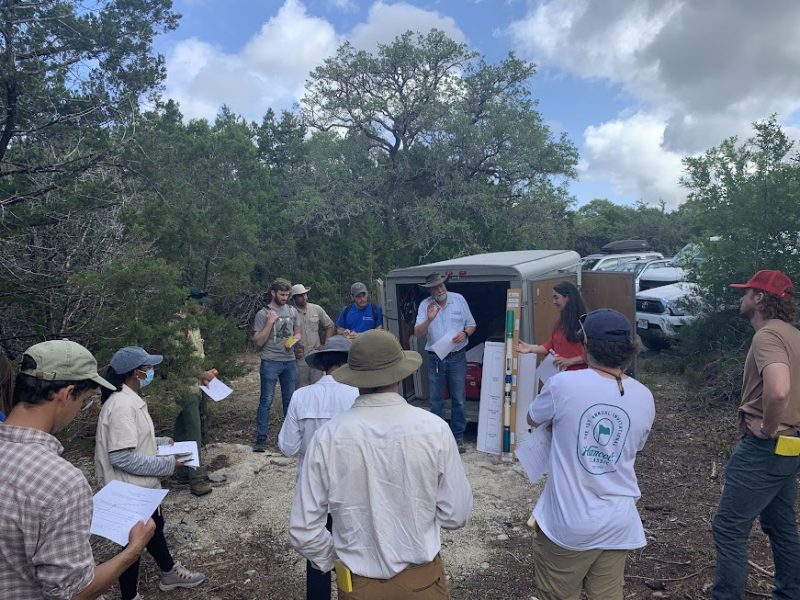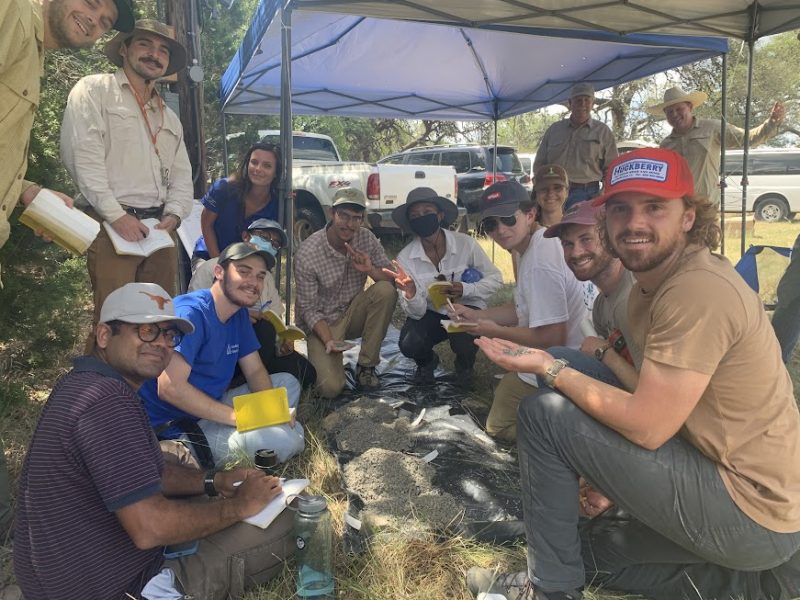Data Points: Hydro Field Camp Blog Part 3!
June 12, 2022
This is the third blog post in a series covering the 2022 Hydrogeology Field Camp at the University of Texas at Austin. The observations are by Neelarun Mukherjee, a graduate student working towards his doctorate under the supervision of Dr. Bayani Cardenas, a faculty member in the Department of Geological Sciences (who is credited with the photos). Read the previous blog posts here and here.

WHITE FAMILY OUTDOOR LEARNING CENTER (June 2022) – The last part of the Hydro Field Camp took place in a “Living Classroom”: the White Family Outdoor Learning Center in the Texas Hill Country This is 266-acre hydrologically-active land was donated to Jackson School of Geosciences by alumni Leslie P. White. All the students, teaching assistants, and instructors of Hydro Field Camp 2022 are indebted to the White Family for this donation.
On the very first day, we drove to Jacob’s Well Natural Area which is located around 11 miles south of the “Living Classroom”. Jacob’s Well is a karst spring originating from the Lower Cretaceous, Middle Trinity Aquifer. The Middle Trinity Aquifer is the primary groundwater resource that supplies water to the region. The flow at Jacob’s Well responds to climatic variations on both short- and long-term cycles. Groundwater pumping from the Middle Trinity Aquifer also directly influences the spring’s flow. The combination of periodic drought cycles and increased groundwater pumping has significantly diminished spring flow in recent years. Marcus Gary from the Edwards Aquifer Authority (EAA), Brian Hunt from the Bureau of Economic Geology, and Brian Smith from Barton Springs/Edwards Aquifer Conservation District (BSEACD) taught us about the importance of conserving groundwater in this region as well as the geology of the area. They showed us the deep wells that they are monitoring for water quality and introduced us to the very advanced measuring tools that both EAA and BSEACD use for real-time monitoring. Later, we were introduced to the different geophysical logging tools and were taught how to interpret well logs by EAA hydrogeologist Rob Esquilin.
At the White property, our class was able to observe the drilling of a water well thanks to alumnus Pat Goodson (B.A. 1984) and his company Geoprojects International. Using the rock cuttings from the drilling, we tried to identify the geologic formations at different depths; the lowest formation was Hammett Shale to Lower Trinity. The Hydro Field Camp would like to thank the drillers from Geoprojects International, especially Evan who provided the students with important feedback based on the information about formations that he gleaned while drilling. We also observed real-time geophysical logging of the newly drilled well by Esquilin (above) and his EAA colleague, Richard Gonzales. We analyzed the geophysical logs as tools were assembled and deployed downhole. It was exciting to see how different advanced geophysical tools can correctly identify different formations, and it was exciting to see that this information matched with the observations of the rock cuttings and the drillers’ feedback.
In addition to the enriching knowledge that we received from the professional hydrologists, the students of the Hydro Field Camp also learned more about how groundwater aquifers are recharged and discharged by conducting measurements of South Onion Creek. We used a stream gauge and conducted chemical analysis of the creek that flows through the White property.
We concluded the 2022 Hydro Field Camp with a very delicious dinner with Leslie White at the Salt Lick Texas BBQ located just 12 miles east of the White Family Outdoor Learning Center.



